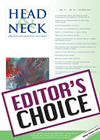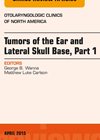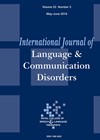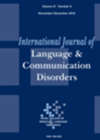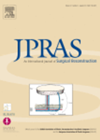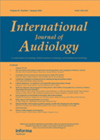
Journal Reviews
Are organ-preserving treatment strategies for T3 laryngeal cancers reducing patient survival?
This article presents the 10-year results of a single institution’s treatment of advanced laryngeal cancer. The institution established a protocol based on the Dutch Head and Neck Society consensus document on laryngeal cancer diagnostics and treatment published in 1991. This...
When ears go bad
Whilst rare, squamous cell carcinoma is the commonest primary malignancy of the temporal bone and is discussed in this review article. This tumour frequently presents with otalgia, ottorhoea and hearing loss; less commonly, with facial palsy or parotid mass. Investigations...
English language development in bilingual toddlers
It is known that bilingual children have a smaller vocabulary in each of their two languages than monolingual children and also take a little longer to reach the same levels as monolinguals on various grammatical tasks. The authors of the...
Relationship between ART and language development
Assisted Reproduction Technology (ART) and especially more invasive techniques of ART may be associated with an increase in neurodevelopmental problems including language delay. Some studies have reported slightly worse perinatal outcomes of IVF babies compared to naturally conceived babies. The...
Specific language impairment in bilingual vs monolingual children
Research has focused mainly on the specific language impairment (SLI) in monolingual children. This article focuses attention on the SLI in bilingual children. The study was conducted with bilingual children from Luxembourg and monolingual children from Portugal who all had...
Postauricular advancement flap for partial helix defect repair
Ear defects can be the result of trauma, burns or ablative surgery. The three dimensional structure of the pinna presents a difficult reconstructive challenge as successful ear reconstruction requires both similar tissue cover and a supporting framework. Partial ear reconstruction...
Risk factors for post tonsillectomy bleeds
This paper reviews post-tonsillectomy bleeding in 692 patients and attempts to tease out risk factors. The overall bleed rate of 11.6% seems very high. The return to theatre rate was 2.6%. The paper identifies male patients and adult patients as...
Inflammation associated with presbyacusis
Inflammaging and presbyacusis is a topic that few audiologists consider in their daily clinical routine due to lack of training in this area. Inflammaging is a chronic state of inflammation present throughout the body. The classic 1965 work by Rosen...
Vascularised tissue in salvage total laryngectomy
Chemoradiation (CRT) has become the mainstay for locally advanced laryngeal cancer since the RTOG 91-11 trial. Unfortunately there is still a substantial demand for salvage laryngectomies, which have a higher complication rate, the most notable being pharyngocutaneous fistula (PCF). Several...
Early habilitation for hearing impairment in children with Down syndrome
Approximately 40-80% of children with Down syndrome have hearing impairment in addition to speech and language impairment. The commonest cause of hearing impairment in young children is otitis media with effusion. This paper investigated the impact of early hearing loss...

